This was published 9 years ago
Top ten reasons to love travelling in Europe
You may be able to book a cheaper holiday, but nothing compares with the variety and fascinating wealth of Europe, writes Steve McKenna.
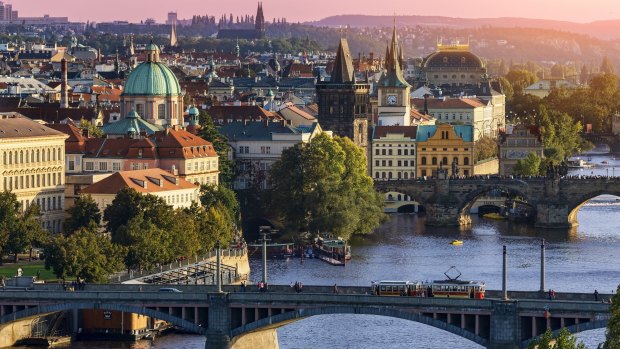
Ancient history: A view of Prague looking over the city and river.Credit: Getty Images
Europe is a long, long way away. It takes the best part of a day to fly to, playing havoc with your body clock. Getting there - and staying there - isn't cheap, either. The exchange rate between the Euro and the Australian dollar is worse than with the greenback and you can have an all-inclusive package holiday to Bali for the cost of a return airfare to the continent. So why do we bother with Europe at all? Well, let us count the ways.
1. THE HISTORY
Pondering the wisdom of Socrates and Plato while trekking up the Athens Acropolis. Indulging your inner gladiator at the Roman Colosseum. Getting lost amid the labyrinthine, cobblestoned Old Town of Prague. Stretching from Lisbon to Istanbul, Europe is crammed with sights and streets that have been shaped by more than 3000 years of human civilisation. This is a continent that lets you bed down in fairytale castles. Walk hand-in-hand along ancient city walls and aqueducts. Take a pew in a mighty mediaeval cathedral. Roam the windswept beaches where the world wars played out. Tramp around myth-drenched villages that pre-date the pyramids of Giza. As more than one Australian has been overheard saying, "Wow, you can almost feel the history".
2. THE CITIES
London. Paris. Barcelona. Berlin. Europe is home to some of the world's greatest cities. The brilliant thing about them is that they never stand still. New fads and fashions - and a constant influx of immigration - mean these dynamic metropolises are always reinventing themselves. Visitors will naturally make a beeline to the iconic sights - after all, what's Barcelona without Gaudi's La Sagrada Familia or Paris minus the Eiffel Tower or the Louvre? However, inner-city zones that, not so long ago, were derelict industrial wastelands or down-and-out 'hoods are now increasingly appealing to tourists. London's evolving East End, and Friedrichshain-Kreuzberg (where you'll find the longest remaining section of the Berlin Wall) are two examples of hip and happening districts brimming with creativity, while you may be surprised to discover cutting-edge street - or guerrilla - art stencilled across the renaissance city of Florence.
3. THE TRAINS
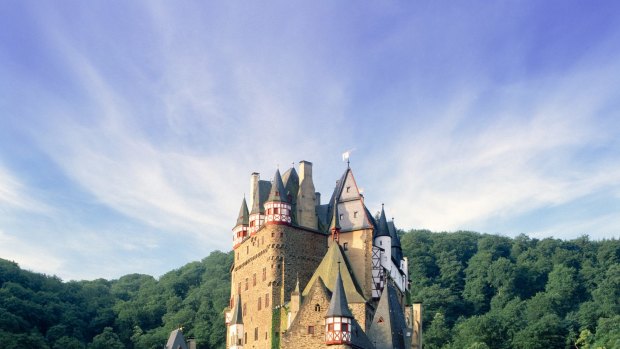
Incomparable: The entrance to a castle in Germany's Moselle River valley. Credit: Getty Images
Thanks to budget airlines like Ryanair, you can now fly from the chilly tundras of Scandinavia to the sun-baked Spanish costas for less than $50. But most of the time, travelling around Europe is better by train. The continent is criss-crossed with rail tracks, spanning everything from chugging cog-wheel alpine lines to super-sleek ones that carry Frecciarossa and TGV trains at speeds approaching 360km/h. Window scenery is diverse and often spectacular - especially through mountainous nations like Switzerland and Slovenia, or along coastlines like the French Riviera. Another thrill of European rail travel is crossing borders, and encountering a different language, culture and (sometimes) currency, within an hour's journey. As well as the regular services, there's an raft of special trains, such as heritage steam locomotives and the Venice Simplon-Orient-Express, a paragon of opulence that runs from London to Venice.
4. THE RIVERS AND THE CANALS
Long before the advent of trains, planes and automobiles, Europe's waterways played a pivotal role in its development from Stone Age hinterland to the epicentre of the Industrial Revolution. While no longer the vibrant veins of trade of a few centuries ago, the continent's rivers, fjords and canals have emerged as booming leisure cruise destinations. Popular routes include Vienna-Budapest on the Danube, Europe's second longest river (after the Volga in Russia), and Basel-Cologne on the Rhine. Some cities - notably St Petersburg, Bruges, Amsterdam and, of course, Venice - are synonymous with canals, and romantic canal trips, while some countries - particularly England and France - have extensive inland canal networks. Fancy hiring, navigating and sleeping on a narrowboat? You can do that here.
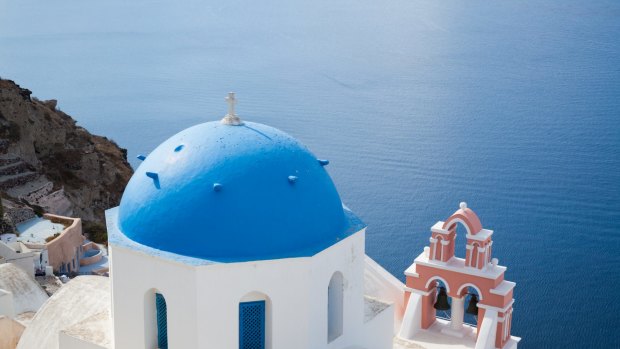
Coastal odyssey: An iconic blue-domed church on the Greek island of Santorini. Credit: Getty Images
5. THE ISLANDS
Historic harbours rim Europe's coastlines, with the likes of Cadiz, Marseille and Genoa absorbing ports of call for ocean-going cruise liners. Others are springboards for memorable island-hopping adventures. Take Piraeus, the port near Athens - from which you can board ferries to dozens of exotic Greek islands, including Crete, Mykonos, Santorini and Rhodes. Once you've tired of the wonderful walled old town of Dubrovnik, you can sail around Croatia's majestic 700-island archipelago. Other seductive island-hopping gateways include Palma de Mallorca (for the Balearics), Valletta (for Malta) and Las Palmas de Gran Canaria (for the Canary Islands).
6. THE FOOD
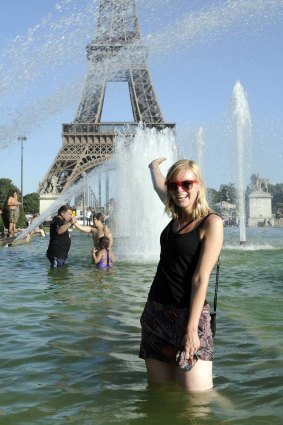
What's Paris without the Eiffel Tower?Credit: AFP
Europe is jam-packed with tantalising foodie experiences. Think: devouring warm, melt-in-your mouth croissants and pain au chocolat purchased from a boulangerie in a chocolate-box-pretty French town. Enjoying an alfresco seafood feast beside a crystal-clear Mediterranean bay speckled with colourful fishing boats. Tapas bar crawling in Madrid or San Sebastian. Licking a gelato while gallivanting across a piazza in Rome (or munching a mozzarella-drenched pizza in the scooter-strewn streets of Naples). A European adventure is also about sampling the local favourites. You may find yourself addicted to boreks (a flaky pastry snack) in the Balkans, or pierogi (dumplings), which are served in dozens of flavours, sweet and savoury, in Poland.
7. THE COUNTRYSIDE
Europe's cities hog the headlines, but it's the countryside that many travellers fall in love with. Carpeted in snow and ski bunnies in winter, and abundant with lush green, floral-rich scenery in summer, the Swiss Alps are a dream for lovers of the great outdoors. So, too, is Cinque Terre, where a trail traverses five fabulously photogenic towns, perched on clifftops overlooking the Mediterranean. Inland, the great Italian lakes never fail to enchant, while you may wish to live out your daydreams under the Tuscan sun, sipping a glass of Chianti and reading your Frances Mayes or Elizabeth Gilbert on the terrace of a renovated stone farmhouse. Alternatively, rent a cottage amid the lavender fields of Provence which made such an impression on van Gogh. Or chase Santa Claus and the Northern Lights in far-flung Lapland.
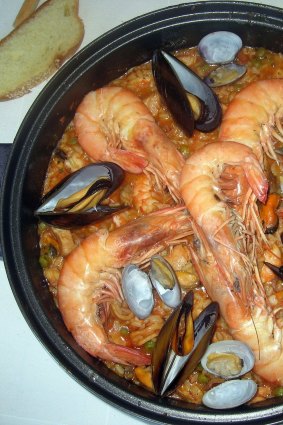
Gastro genius: A traditional Spanish paella seafood dish from Valencia.Credit: Getty Images
8. THE HIDDEN GEMS
One of the joys of travel is finding a hidden gem. Europe is full of them. It is 25 years since the Iron Curtain fell, and former Soviet cities like Tallinn and Krakow are firm favourites on the tourist trail, but other picturesque central and eastern European spots are still off most travellers' radars. The historic towns of Kotor (Montenegro), Maribor (Slovenia), Olomouc (Czech Republic), Pecs (Hungary), Sibiu (Romania), Torun (Poland) and Veliko Tarnovo (Bulgaria) are all enticing little city break destinations; the lakes of Ohrid (Macedona) and Bled (Slovenia) are utterly bewitching and do you know which country has arguably Europe's most gorgeous coastline? That'd be Albania. A jumble of olive groves, sheer cliffs and turquoise seas, the Albanian Riviera, as it's known, is jaw-droppingly beautiful.
9. THE FESTIVALS
Europe has an extraordinary calendar of festivals. Many - such as the Semana Santa holy week in Seville - ooze centuries of tradition. Others, such as Sonar in Barcelona, flaunt cutting-edge trends and sounds. A few, like the annual Cheese Rolling competition in Gloucestershire, England, revel in their Monty Python-esque absurdity. Across the continent, you can mingle with like-minded souls at music festivals, film festivals, comedy festivals, arts festivals, food and wine festivals, beer festivals and festive - OK, Christmas - festivals. One thing's for sure: come to Europe and you'll find your kind of festival.
10. THE PUBS
Bouncing through Europe, you're bound to work up a thirst. While you'll find scores of vineyards and wine cellars, it's the old pubs that often generate the most vivid - or blurry - memories: quaffing pints of Guinness with affable punters in taverns across the Emerald Isle (Ireland), sipping real ale in the creaking, timber-beamed olde-worlde pubs of England, sinking steins served by dirndl-clad waitresses in the beerhouses of Munich, or trying 1001 different tipples in a Brussels back-street bar. Your idea of a beer drinker's heaven may be the Czech Republic. Here, you'll rarely pay more than $1.50 for a half-litre of the planet's finest pilsner. Prefer a caffeine hit? Europe is a land of pavement cafes; perfect for watching this endlessly fascinating continent go by.
Sign up for the Traveller Deals newsletter
Get exclusive travel deals delivered straight to your inbox. Sign up now.